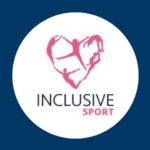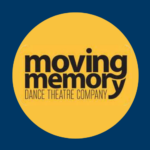Safeguarding and inclusion are fundamental to the work we do in tackling the inequalities that prevent some people from accessing positive experiences of sport and physical activity. To reach a diverse audience, support people to participate and thrive, and to engage people long term, we need to consider the environment that we are creating.
The foundations of both safeguarding and inclusion are to ensure people feel safe and welcomed, a sense of belonging, valued and respected, and confident to speak up. The following partner organisations kindly shared examples of the work they do in creating a safe and supportive environment based on individuals’ needs.
 Inclusive Sport
Inclusive Sport
How do you create a supportive environment based on individual needs?
“We start all programmes with a meet and greet session. This allows us to gather an insight of the needs, interests and challenges of each bespoke group.” Tom, Director
Inclusive Sport has established relationships with local authorities, as well as building networks with local social prescribing organisations. They share links to these support services as part of their termly newsletter, and all their coaches are aware of local support services relevant to the audience they are working with.
 Canterbury Kings
Canterbury Kings
How do you create an environment that puts inclusion and welfare at the centre?
“Ultimately you coach the player in front of you, and work with them towards their goals” Lesley, Para Badminton Coach
Evidence of this approach is reflected in the team’s attendance at the UK Para Badminton championships last year. The team demonstrated a commitment to inclusion and welfare, and adapting to circumstances – such as team members making signs for players to help them remember certain things, and playing extra games to make sure people who weren’t competing felt included.
 Moving Memory Dance Theatre Company
Moving Memory Dance Theatre Company
How do you keep your values at the heart of your delivery?
“Our values are based on humility, a sense of fun and including all participants as partners. We challenge assumptions and expectations of age and ageing across the course of life.” Sian, Creative Director
At Moving Memory, they have recently created a new role: a ‘Creative Access Co-ordinator’ to support facilitators, by observing the group and working together to make sure everyone is included and able to participate and contribute safely. The organisation safeguards both participants and facilitators, by asking people to let them know about any health concerns, but also ensuring they know it’s important to look after their own health.
 Cyclopark
Cyclopark
How do you make sure you are continuously improving your approach?
“From the feedback we received, we have made changes to meet the participants needs, including ensuring there is a designated meeting area and making all the staff on site aware of the session.” Jimmy, Development Coach
After each session of their inclusive programme, they sit down with the participants and a counsellor and discuss how the session went. This has helped Cyclopark to focus on the needs of the participants and allowed them to understand what they want and need from the sessions.
 Sense Active
Sense Active
How do you support your workforce to take a person-centred approach?
“At Sense, we encourage our coaches to use ‘About Me’ profiles as a way of understanding the most important things that participants want to share with the coach. This could be sensory needs, mobility, communication or behaviours.” Katie, Sport & Physical Activity Coordinator
They use a ‘Think, ask, include’ approach across the organisation to really encourage and support their workforce to have person-centred approaches to delivering activity. This ensures meaningful and active participation, even if that means reducing the complexity of the activity. A simpler activity can mean that the participant gets full involvement, at a level that is suitable for them to gain benefits. They also ensure that participant voice is at the heart of their planning and delivery.
We’d like to thank all the partner organisations for sharing their examples. If you’d like to share your own examples of the work you do in creating a safe and supportive environment based on individuals’ needs, or have any questions relating to this area of work, then please get in touch with Elise Rendall, Physical Activity Manager at elise.rendall@kent.gov.uk

